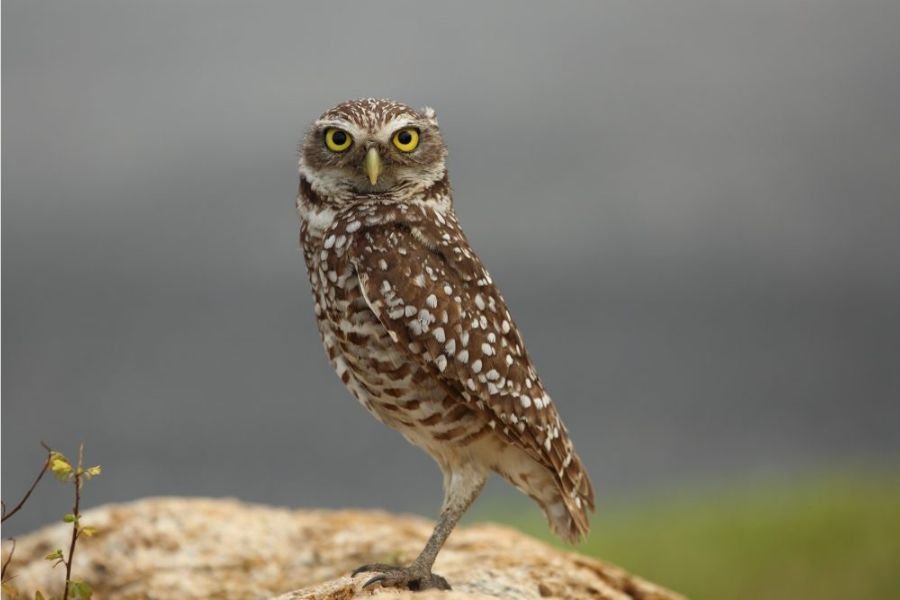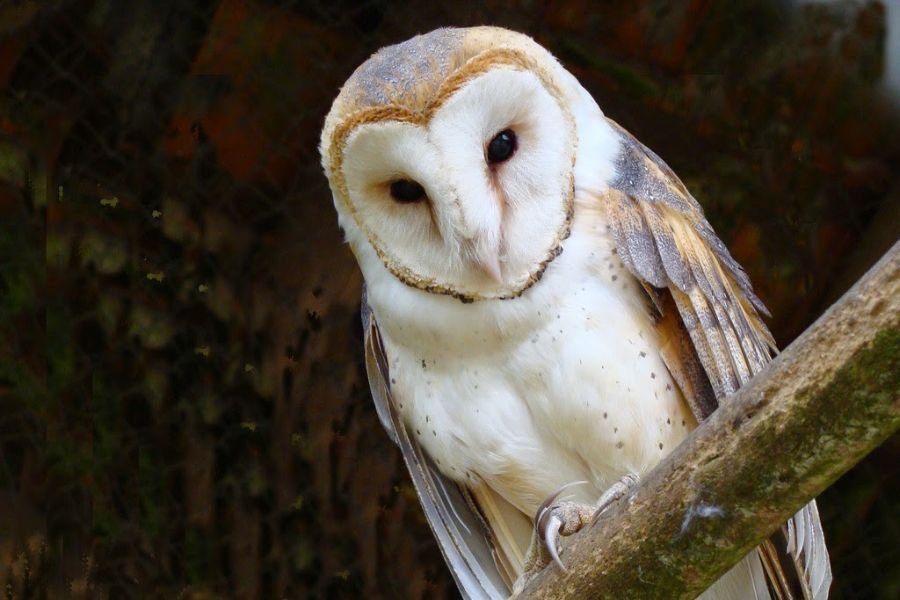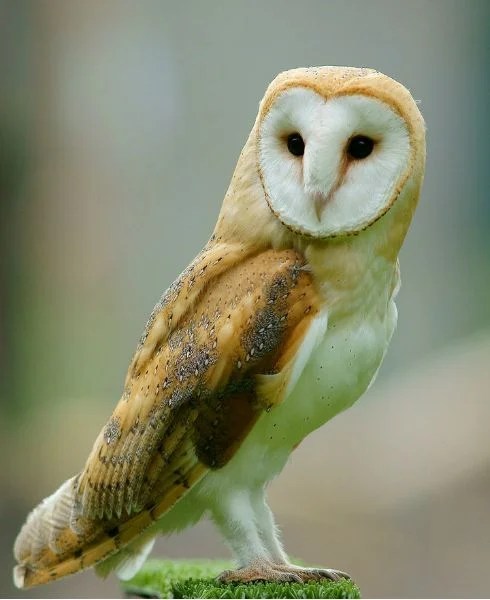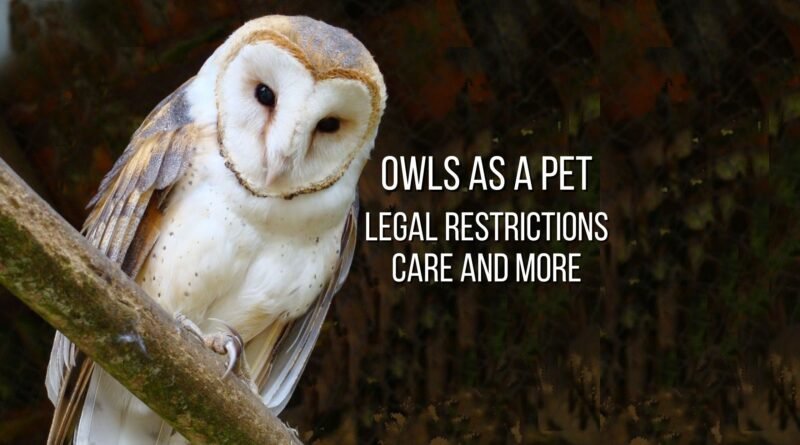Owls as a Pet – Legal restrictions, care and more
Perhaps it was because of Hogwarts and its messenger owls, perhaps not. But the point is that the demand for exotic pets has increased a lot in recent years and among these animals is the owl. But is it really possible to have an owl as pets? Are owls tameable? What about the legislation on the matter? Well, let’s try to clarify these and other points in this article. Enjoy the reading!

Owl – general features
Nocturnal birds, for the most part, belong to the Order Strigiformes and are divided into two families: Tytonidae and Strigidae. Although they all belong to the same Order, there are more than 200 different types of owls across the planet. Some are very small, with about 2 ounces and others weigh more than 2 pounds. The largest and rarest owl species known can reach 11 pounds, can you believe it? It is the Blakiston Fish Owl (Bubo blakistoni), which lives in the forests of Russia, China, and Japan. They are an average of 29 inches tall and have a wingspan of 6 feet. What impressive, right?

Large, curious, and inquisitive eyes are a typical feature common to all, as well as lush, soft, and waterproof plumage, sharp claws, and strong beaks. Their colors can vary but are usually brownish. Some species have gray, and white plumage and some spots and stripes. Their head can rotate up to 270 degrees, which compensates for the fact that they cannot move their eyes.
They are birds of prey, which means they hunt for food. Their keen eyesight and hearing, as well as their silent flight, make them efficient hunters.
Domestic owls
As you can imagine, not all species of owls are domesticated, some have wild habits and it has been proven that they do not adapt to domestic environments. If you want to have an owl as spruce pets, know that it is not an easy-to-care animal and requires a lot of dedication. You also need to find out about the legal issues in your country regarding this topic. We’ll talk about that later.
Domestic owls are very friendly. Although it can vary greatly between species, their temperament is usually calm and children can have contact with them. They are not aggressive, but the way they are raised makes all the difference: a docile and gentle treatment, with calm and affectionate approaches, will make your little owl also become gentle and sweet. But anyway, what are tameable owls? We have listed three for you to know below:
Species of domestic owls

Burrowing Owl (Athene cunicularia)
You already guessed why they have that name, right? Exactly, they like to live in holes and burrows in the ground. Despite being able to dig their hole, they usually prefer to occupy abandoned burrows by other animals. Found in Canada, USA, and South America, in Brazil, they are the most known of all owls, they are just not found in the Amazon basin. With no doubt, you’ve seen them on some beaches or even in the urban area, in vacant lots.
Their appearance does not differ much from most owls, however, the yellow eyes and white eyebrows give an exotic touch to the expression on their face. Their plumage is yellowish brown, and females sometimes have a darker tone. With their long legs, they measure about 9 inches in height and weigh a maximum of 9 ounces.
Their food consists of insects (crickets, grasshoppers, moths), spiders, snakes, small rodents, and some small birds. They like to hunt at the end of the day or dawn. Their life span is up to 25 years in their habitat, and only larger birds of prey and man himself are their predators.
A cute curiosity about the burrowing owl’s family dynamics: the young love to stay out of the burrow, but close to it, on the ground or perched on fences or clods of earth. At the slightest sign of danger, the parents, or older siblings, emit a loud, strident sound and, at the same moment, the chicks run into the burrow to protect themselves, while the adults fly over the surroundings of the nest.

Striped Owl (Asio clamator)
Do you know why this owl is known as the “long eared owl” in Brazil? Just like the burrowing owl, it’s not hard to imagine the reason for the name as it’s known in Brazil, right? Look at its image below and you will know. Yes, they look like little ears, but they are two tufts of feathers and not ears. Interesting, isn’t it?
But that’s not the only outstanding feature of the striped owl’s appearance. Their brown gaze is sharp and involving, and the black crown around their white face lends an air of mystery. They have a medium size, about 11 to 15 inches in height and the weight ranges from 11 to 20 ounces. Their colors are mixed light brown, cream, and dark brown stripes. It is a very pretty species.
Quite discreet, with nocturnal habits, they like to hunt at night or dusk and feed on small mammals, rodents, lizards, and small birds. Found throughout Central and South America, they live in forests and woods but they are also seen in wooded urban areas.
A curiosity about the striped owl: when they are in a dangerous situation, they have the habit of inflating their bodies and keeping their plumage bristly, while clicking their beaks to make threatening and intimidating noises.

American barn owl (Tyto furcata)
Also known as barn owl and common barn owl, the name suindara, as they are known in Brazil, has a Tupi origin and means “the one that does not eat”. While flying, the barn owl emits a very distinctive sound similar to a tearing cloth. Is that why they are also known as rasga-mortalha in Portuguese?
The barn owl leads a more urban lifestyle compared to its previous “cousins.” It enjoys being among humans and chooses habitats like church spires, building ceilings, and attics. It can also be found in fields with open vegetation, caves, and forest edges. In Brazil, it inhabits all regions. It has a global presence, being observed in Australia, Europe, Africa, Canada, the United States, and even the Caribbean islands.
Perhaps the most distinctive feature of the barn owl’s appearance is the prominent facial discs on its face, which resemble the shape of a heart. These discs have the function of carrying sounds to their outer ears and it is the only snowy owl with facial discs in this format. They might as well be known as the heart-faced owl, don’t you think? Oh, that would be cute ♥
Still talking about physical appearance, the barn great horned owl is medium to large, is around 14 inches tall, and weighs around 18 ounces. The wingspan (distance from one wing tip to the other) can reach more than 3 feet. The predominant color on the inner side and lower parts of the body (chest, stomach, neck, etc.) is white and the upper parts, the outer side, are grayish-brown, with mixtures of colors that resemble tanned.
Its diet is based on small rodents, larger insects, bats, reptiles, amphibians, and birds, depending on the time of year, preferring to hunt always at night or dusk.
Owl as pets – is it possible?
Owning an owl as a pet is possible in some countries, but it is important to comply with the legislation specific to your country. In Brazil, for example, it is allowed to own an owl as a pet as long as you have authorization from IBAMA (Brazilian Institute of Environment and Renewable Natural Resources). However, there are several requirements and regulations that need to be met.
To legally own an owl in Brazil, you must be over 18 years old and register with SISPASS (the National System of Environmental Management of Wild Animals). You also need to have a Cadastro Técnico Federal (CTF) or Federal Technical Registry. These registrations ensure that you are a responsible owner and are committed to the welfare of the owl.
When purchasing an owl, it is important to obtain it from a licensed raiser who is authorized to sell these birds. Buying from an unlicensed source can lead to fines and legal consequences. The licensed raiser should provide you with an invoice for the purchase, a veterinary report confirming the health of the owl, and an IEF (State Forest Institute) registration. Additionally, the owl should have a ring on its paw for identification purposes, and the raiser should provide you with a transport care guide to ensure the safe transport of the owl to its new home.
It is crucial to thoroughly research and understand the specific legislation and requirements in your country or region before considering owning an owl as a pet. Owning an owl requires knowledge, commitment, and a genuine dedication to their well-being.
Caring for your pet owl
You’ve seen that having an owl as pets isn’t as simple as in the Harry Potter movies, right? Here are some important precautions to take:
- Wide place, with enough space for it to exercise, and fly safely so it doesn’t crash or run away. That is, if you live in an apartment, unfortunately, it is not possible to have an owl as pets.
- It needs a perch where it can sunbathe and a place to bathe.
- It needs a sheltered, dark aviary (usually made of wood) in which it can sleep. It is important to emphasize that common birdcages are not suitable for owls.
- There is no feed for owls, so you will need to take care of their food directly. Depending on the species you choose, their diet will be based on mice and other small mammals, and you’ll need to get them, which may not be easy. (Yuck!)
- The biggest cause of illness in captive owls is nutritional deficiency. Therefore, it is essential to visit a veterinarian for wild or exotic animals so that he can advise you on the most appropriate food supplement.
- There are no vaccines for owls, so proper nutrition, and a clean and parasite-free place are the points that will make your little owl live strong, healthy, and happy.



Conclusion
Having an owl as a pet is challenging and not recommended for beginners. If you decide to get an owl, take all necessary precautions and follow legal obligations. Remember that taking a wild animal from its habitat is not ideal. Ensure you are knowledgeable about owl care and are prepared to provide for their specific needs. Comply with all legal requirements and be responsible for your owl’s well-being. Make sure you are fully committed and ready to handle the responsibilities of owning an owl.
FAQ about Owls as a Pet
Is it legal to own an owl as a pet?
Owning a native owl species as a pet is generally illegal in the United States due to laws and regulations protecting exotic animals. However, non-native owls may be owned with the appropriate permits and certifications for educational, falconry, or rehabilitation purposes. It is important to check the specific laws and regulations in your country or state.
What do owls eat as pets?
Owls are carnivorous and primarily feed on fresh meat. Their diet consists of day-old chicks, young rats, whole quails, and sometimes mice. Owls do not require cooked food, vegetables, or designated bird-friendly feeds like other birds. However, the exact nutritional requirements for owls may not be well-documented.
Do owls require a lot of attention and companionship?
Unlike many companion birds, owls are solitary creatures and do not rely on constant human affection or companionship. They can adapt to solitary living and do not experience separation anxiety if left alone for extended periods. Owls, such as barn owls, which are naturally social, can also adapt to living alone.
How much physical activity do owls need?
Owls are sedentary birds and require minimal physical activity. They are usually content sitting on a perch and do not engage in high-energy activities. Owls have minimal housing requirements, needing only a few perching places and a small window to observe the outdoors.
How long do owls live as pets?
The lifespan of an owl in captivity can vary depending on the species and the care provided. With proper care and nutrition, owls can live for a substantial period. For example, the Eurasian eagle owl can live for 20 to 50 years in captivity, compared to around 20 years in the wild.




